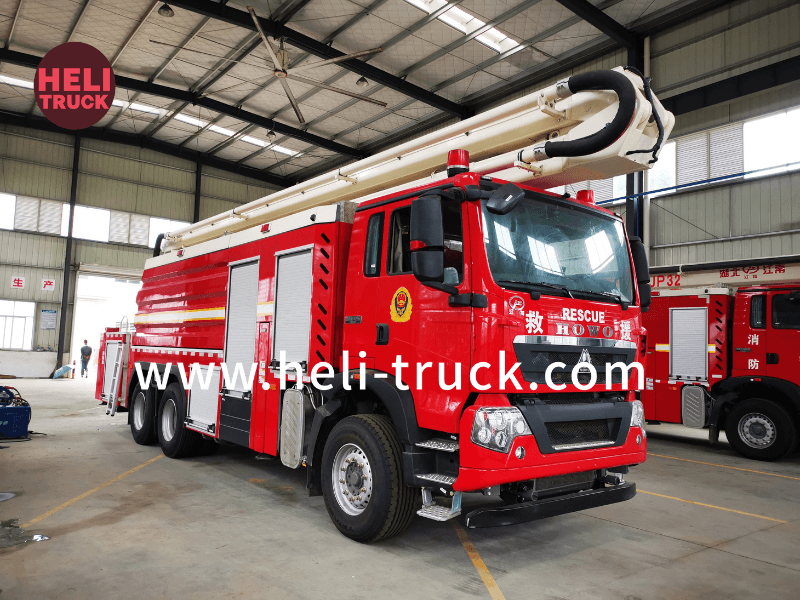Introduction
Garbage compactor trucks play a crucial role in waste management systems around the world, helping to collect and transport waste efficiently. Among the various types of garbage compactor trucks available, those with high compaction ratios offer distinct advantages in terms of maximizing efficiency and reducing operational costs. In this article, we will explore the significance of garbage compactor trucks with high compaction ratios, their functioning, benefits, and impact on waste management practices.

1. Understanding Garbage Compactor Trucks
Garbage compactor trucks, also known as compactors or trash compactors, are specialized vehicles designed to collect and compact solid waste materials. These trucks come in different sizes and configurations to cater to the specific needs of various waste management operations, from residential to commercial and industrial settings. The primary function of a garbage compactor truck is to compress and compact waste materials to reduce their volume, enabling more efficient transport and disposal.
2. The Role of Compaction Ratio
The compaction ratio of a garbage compactor truck refers to the ratio of the original volume of waste material to the volume after compaction. Trucks with high compaction ratios are designed to compress waste more effectively, resulting in a significant reduction in volume compared to trucks with lower compaction ratios. The higher the compaction ratio, the more waste can be accommodated in the truck's storage compartment, leading to fewer trips for disposal and increased operational efficiency.
3. Functioning of Garbage Compactor Trucks with High Compaction Ratios
Garbage compactor trucks with high compaction ratios operate using hydraulic systems that apply pressure to compress waste materials. These trucks are equipped with compacting mechanisms such as moving plates or blades that crush and compact the waste as it is loaded into the truck's hopper. https://www.heli-truck.com/ultimate-guide-to-truck-mounted-cranes-types-uses-and-future-trends/ is controlled by the truck's operator, who can adjust the pressure and timing to achieve the desired level of compaction.
4. Benefits of High Compaction Ratio Trucks
4.1 Increased Capacity: One of the primary benefits of garbage compactor trucks with high compaction ratios is their increased capacity to hold and transport more waste. By reducing the volume of waste through effective compaction, these trucks can accommodate larger quantities of waste per trip, leading to fewer trips to disposal sites and reduced fuel consumption.
4.2 Enhanced Efficiency: High compaction ratio trucks contribute to operational efficiency by optimizing the use of available space in the truck's storage compartment. The ability to pack more waste into the same volume allows for better utilization of resources and manpower, resulting in cost savings and improved productivity.
4.3 Reduced Environmental Impact: By maximizing the compaction of waste materials, high compaction ratio trucks help minimize the space required for landfill disposal. This reduction in landfill space usage can contribute to environmental conservation efforts by prolonging the lifespan of disposal sites and reducing the need for new landfills.
4.4 Improved Hygiene and Safety: Compact waste disposal is essential for maintaining hygiene and safety standards in waste management operations. Garbage compactor trucks with high compaction ratios help contain and seal waste materials effectively, reducing the risk of odors, spillage, and contamination during transportation and disposal.
5. Impact on Waste Management Practices
The adoption of garbage compactor trucks with high compaction ratios has a significant impact on waste management practices at both local and municipal levels. Municipalities and waste management companies that utilize these trucks benefit from increased operational efficiency, reduced costs, and improved environmental sustainability. The ability to transport larger quantities of waste in fewer trips allows for better resource allocation and optimized route planning, leading to overall improvements in waste collection and disposal services.
6. Challenges and Considerations
While garbage compactor trucks with high compaction ratios offer several advantages, there are also challenges and considerations to be aware of when incorporating these vehicles into waste management systems. Factors such as maintenance requirements, operator training, and initial investment costs need to be taken into account to ensure the successful implementation and long-term sustainability of high compaction ratio trucks.
7. Conclusion
In conclusion, garbage compactor trucks with high compaction ratios play a vital role in modern waste management practices by enhancing efficiency, reducing operational costs, and promoting environmental sustainability. The ability of these trucks to compress waste materials effectively and maximize storage capacity offers numerous benefits to municipalities, waste management companies, and communities at large. By understanding the significance of high compaction ratio trucks and their impact on waste management operations, stakeholders can make informed decisions to improve the overall effectiveness of their waste management systems.
